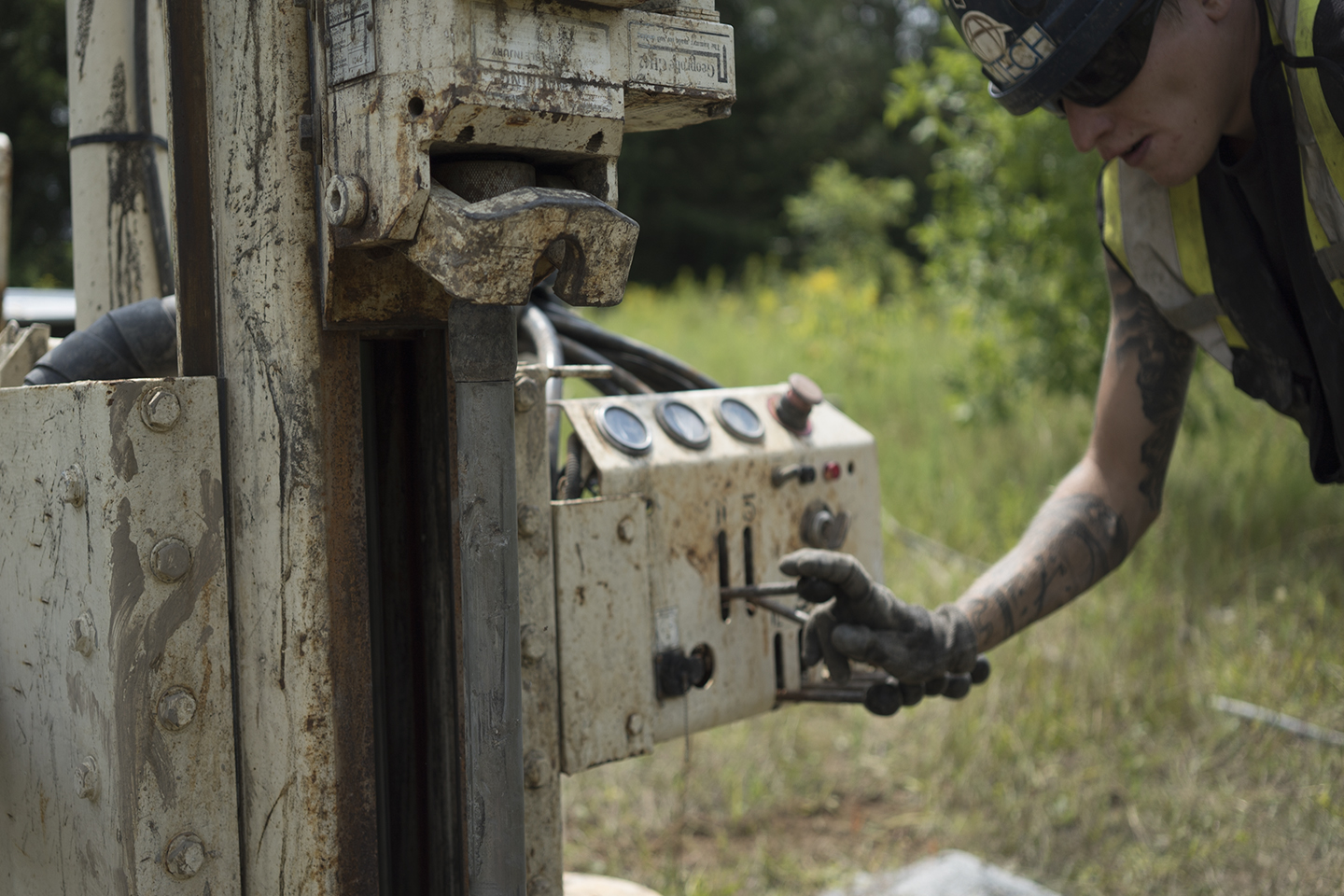Activated Carbon
IRSL is uniquely qualified to apply Activated Carbon in Canada and internationally. We have experience in applying both powdered and liquid forms of activated carbon in a variety of geologic settings. Each form of activated carbon provides advantages and disadvantages that need to be taken into consideration when developing a remedial program.
Activated Carbon can be applied as a powder or a liquid, depending on the unique needs of the remedial situation. Most forms of activated carbon are injected with a supplemental material to aid in the degradation of the compounds of concern through abiotic (e.g. beta elimination) or biotic reactions (anaerobic or aerobic).
Liquid Activated Carbon
Liquid activated carbon sold under the brand name of PlumeStop® was developed by REGENESIS. PlumeStop® Liquid Activated Carbon™ is an innovative in-situ remediation technology capable of rapidly capturing and dropping a range of groundwater contaminant concentrations in days to weeks, while effectively biodegrading them over time.
As a REGENESIS Certified PlumeStop Applicator, IRSL has used PlumeStop Liquid Activated Carbon to expediently remediate challenging sites to below regulatory standards where other remedial approaches had failed. PlumeStop allows remediation practitioners to achieve fast treatment of groundwater with a high degree of certainty that the contaminants are biologically degraded. In our experience, it rapidly reduces contaminant concentrations, and often results in the mitigation and reduction of plumes as well as minimizing the potential for contaminant rebound due to back-diffusion.
Chemical Process
PlumeStop® is composed of very fine particles of activated carbon (1-2µm) suspended in water through the use of unique organic polymer dispersion chemistry. The technical innovation allows for wide dispersion of a sorptive medium in the aqueous subsurface.
Three-Fold Function
1. Once in the subsurface, it behaves as a colloidal biomatrix, binding to the aquifer matrix and rapidly sorbing contaminants out of the dissolved-phase.
2. Once contaminants are captured within the high surface area regenerative biomatrix, which is very favourable for microbial colonization and growth, they can be biodegraded in place.
3. Finally, it creates a geochemical environment that enhances biological degradation reactions, which result in the re-generation of the activated carbon itself.
Contaminants Treated
According to Regenesis, PlumeStop® is effective on most organic groundwater contaminants including hydrocarbons, halogenated compounds, and a wide variety of volatile organic compounds (VOCs) and semi-volatile organic compounds (SVOCs), including relatively new compounds of concern like perfluorinated compounds.

Case Studies
PFOA and PFOS Remediation in Silty Sand
Using Direct Push Technology to inject Liquid Activated Carbon and Persulphate to remediate residual groundwater impacts. http://irsl.ca/case-study-pfos-pfoas-toronto-ontario/
PHC Remediation with a Direct Push Technology
Using Liquid Activated Carbon for the in-situ treatment of Petroleum Hydrocarbons at a private residence. http://irsl.ca/case-study-phc-huntsville-ontario/
BTEX and PHC Remediation in Silty Sand Using PlumeStop
Using Direct Push Technology to stimulate adsorption and aerobic bioremediation. http://irsl.ca/btex-phc-remediation-silty-sand-using-liquid-activated-carbon/
REGENESIS Case Study
http://irsl.ca/wp-content/uploads/2017/03/Regenesis%C2%AE-Whitby-Ontario-Case-Study.pdf
Ready to get started?
Speak with our engineering team about how our environmental remediation services can help you in your remediation journey and take the next steps to building a better environment and a cleaner community with your project.
I'm ready to Start